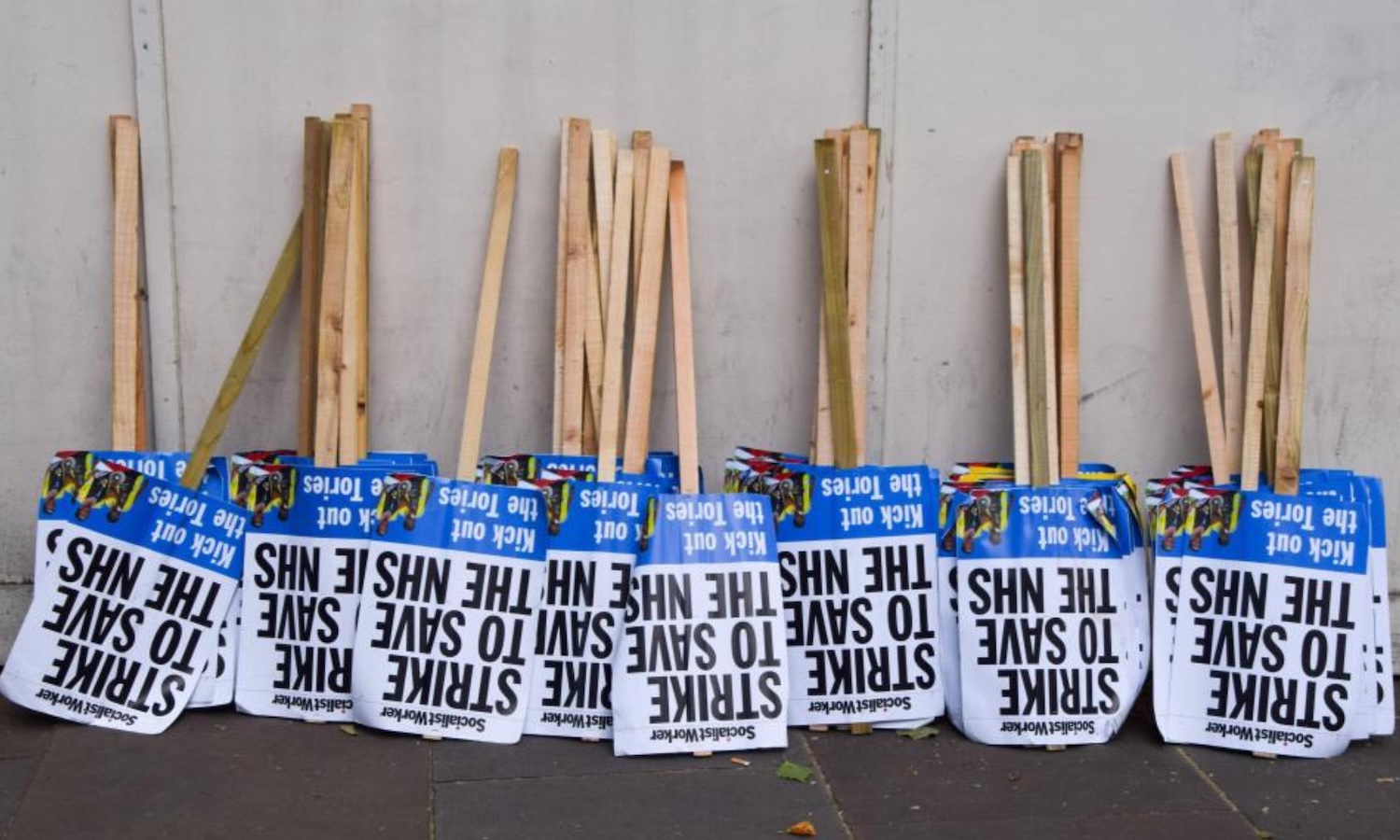Technology repair engineers, hobbyists and farmers have joined together in an unlikely alliance to fight for the right to repair their own machines.
Original equipment manufacturers, including laptop and smartphone manufacturer Apple and agricultural machinery producer John Deere, have been making it more and more challenging for their products to be repaired by third parties.
These companies are moving to monopolise the repair market for their products. Under the pretence of protecting consumers from unlicensed repairs, they have been using law enforcement, asset seizure and obfuscation to prevent users from being able to get their products repaired anywhere other than certified outlets.
Monopolisation of the repair market allows these industries to control a network of ‘certified’ shops, which exist, without competition, as the only place users can get information, parts and repairs for their devices. This allows them to charge extremely high prices for even trivial repairs.
In the interest of maximising profits for the manufacturer, they encourage the wasteful practice of replacing entire components when a small fault occurs. They even stop supporting older machines, and completely refuse to service them. This gives users no option to repair the machine and instead forces them to buy whole new machines or components no matter how simple the repair would have been.
John Deere v small farmers
For users of the latest iPhone this is an expensive inconvenience – but for farmers it is a threat to their livelihood. John Deere has attempted such practices for its tractor business. It has tried to force farmers into using only its own certified dealerships for repairs by locking end users out of the diagnostic software required to carry them out.
The result is that even minor repairs require a visit to the dealership. Taking large agricultural machinery to the nearest dealership isn’t always an easy task. In the USA, Nebraskan farmer Kyle Schwarting explained the challenge of taking a combine harvester to the dealer:
“Look at the size of this machine. If I had to haul this thing a hundred miles every time something went wrong with it, it would cost a fortune. Just to get it on a truck costs a thousand bucks.”
It’s not only the cost of the repairs that are a concern; taking key machinery out of action at critical times of the year could have very serious consequences to that year’s harvest, and is pay lost by contractors who can’t carry out their work.
Even something as simple as replacing worn or broken parts becomes impossible because of the software restrictions. Tom Schwarz, a farmer accustomed to fixing his own machines, explained: “There are used parts for these tractors, but if I put them on, the tractor won’t run.” He also explained that John Deere could discontinue support for various parts, such as GPS modules, forcing users to buy new ones instead of repairing them.
To overcome these hurdles, farmers are now making use of software produced by hackers in eastern Europe that allows them to plug a laptop into their tractors. They can use this to bypass restrictions put in place by John Deere, hack into the tractor’s diagnostics, and effect the repairs themselves.
Even the interface is proprietary; farmers had to make their own cables to connect the machine to their laptops. John Deere’s terms of service forbid accessing or modifying the tractor firmware or diagnostics.
Fighting in the courts
A Nebraskan farmer, Guy Mills, proposed a resolution supported in the state legislature by his local senator Lydia Brasch, to fight for access to these diagnostic tools. The hearing, LB67, took place at Nebraska State House.
It included statutory language allowing independent repair shops and owners to obtain diagnostic manuals and purchase diagnostic tools and equipment at a reasonable price, something Guy Mills couldn’t understand why anyone would oppose. But more was at stake than he realised: the right of monopoly capital to rig the market in its favour.
In the event, the ‘local’ hearing was joined by representatives from major multinational corporations such as Apple, Microsoft, and other big tech companies, who flew in from around the country. Also in that room was independent repair specialist Louis Rossman, who has been very critical of Apple’s anti-repair practices.
Kim Robak, from AT&T, threatened that tech companies would no longer sell their products in or to Nebraska if local governance required them to make diagnostic tools and equipment available. (Update on Nebraska LB67: Adopt the Fair Repair Act by Jon S Horneber, Suiter.com, 22 March 2017)
Representatives from tech giants took part in that ‘local’ dispute over farm machinery repair in Nebraska because they were very aware that legislation covering the right to repair would also affect their own practices.
If passed, the proposed legislation would set a precedent that jeopardised their actually existing policy of designed product obsolescence, and monopolisation of repairs, putting them in a position that threatened to decrease their profits and increase the longevity of their products. Of course, they want their products to break and be too expensive or difficult to fix; it is in their financial interest for users to ‘want’ to buy a new phone every two years.
Apple v laptop and phone users
In October 2018 CBC News published an in-depth report into Apple’s ‘Genius Bar’ (technical support station), in which a member of staff gave their undercover reporter a $1,200 price quotation for fixing a broken laptop. The reporter was told that there was no cheaper alternative – other than buying a brand new laptop.
This is a now a familiar experience across the technology sector, as our readers will recognise from personal experience. As Marx was fond of quoting in Capital: caveat emptor! (Buyer, beware!)
Louis Rossman examined the same laptop. He was able the repair it by straightening a bent pin on a cable inside the machine. It took him a few minutes, and he claimed that this repair was so trivial he usually did it for free, but would charge $75 to $150 for a new cable.
Rossman told the reporters he sees customers who have been told by Apple that their laptops can’t be fixed “somewhere between ten and thirty times a day”.
But Apple is not making Rossman’s job easy. Just a few days after the CBC News report aired, the company retaliated against this bad press by tipping off US customs to an import destined for Rossman’s repair business. They seized 20 laptop batteries worth $1,068 because Apple was claiming that they were counterfeit.
Since these are from older models, Apple no longer even sells these batteries itself and refuses to service the model of laptop that uses them. Apple has no interest in these batteries other than wanting to prevent any threat to its complete monopolisation of the lifecycle of its products, and therefore monopolisation of the market, to the detriment of the much-lauded ‘free competition’ we hear glorified as the guarantor of the superiority of free-market capitalism (and which has not existed for 120 years!)
In an even more disgusting act of anti-consumer and anti-competition (don’t laugh!) practices, Apple worked with the US government in 2013 to shut down phone repair shops. The shops were raided by immigration and customs enforcement agents, ICE; the same aggressive militarised police force that has recently been responsible for separating Latin American families and incarcerating their children in cages. (ICE starts raiding mobile phone repair shops to stop repairs with aftermarket parts by Mike Masnick, TechDirt, 30 April 2013)
It’s not just Rossman that Apple isn’t happy with. The company has been making repairs as difficult as possible for all independent servicing. It doesn’t sell spare parts, or release schematics; it even designs its own screws so that a special tool is required for disassembly – a tool that it doesn’t sell. Repair shops have to build their own tools and either reverse engineer the devices, or rely on digital schematics illegally leaked by workers in factories overseas.
Much like replacing spare parts on a John Deere tractor, the iPhone will stop working when parts are replaced. A common component to fail, the home button, used to be fixed by repair shops until Apple updated the software not to recognise replacement buttons. Again – what useful human purpose does this unparalleled meanness and wastefulness serve? Only the corporations’ profit margins!
Apple also started gluing the batteries inside the case, making them harder to replace. It even pushed updates to the operating system that slowed down older phones. The company has argued that this was done to prolong battery life, but if it was really concerned about battery life it wouldn’t have made it so difficult to replace batteries. Instead it has got its customers into the habit of thinking that electronics ‘slow down’ after a while and need to be replaced every few years. (Built to fail: Apple ‘forcing’ expensive upgrades, Plunc, 21 August 2019)
Waste and pollution; blood and sweat
This is all in the service of maximising profits. Apple doesn’t want people repairing their electronics because that would increases the longevity of devices. Devices that last longer mean fewer sales, and an increase in the resale market that further hurts primary sales. This should come as no surprise; every company wants to sell more products.
If the profits keep growing, everyone gets new devices, and the technology improves, what does it matter? Is it such a concern that better-off Americans are having to pay a little extra if the result is a strong economy and a growing tech sector? To answer this question we have to step back and examine the wider economic situation.
If all manufacturers have an economic incentive to encourage end users to discard their old machines and buy new ones as soon as possible then we end up with a never-ending cycle of manufacturing and then discarding vast quantities of goods – not just computers and phones but washing machines, fridges, televisions, gadgets, toys, etc. What is to be done with all this unnecessary waste?
A United Nations (UN) report calculated that 41 million tonnes of electronic waste was discarded in 2014. The World Health Organisation (WHO) has highlighted the health risk associated with exposure to “lead, cadmium, chromium, brominated flame retardants or polychlorinated biphenyls” from electronic waste.
The world’s rubbish dumps are rapidly filling, and the oceans are clogged with plastic that will take thousands of years to decompose. The air in Agbogbloshie, the nickname for a commercial district near to Ghana’s capital Accra that, having once been a wetland, has now become the world’s largest e-waste dump, is acrid with the smoke of burning electronics, dumped there by western ‘recycling’ firms, and incinerated in open air by impoverished local people trying to extract the metals.
A further consequence of this wastefulness is the labour and resources required to build a new product for every old one that breaks. There are 8-year-old children in the Democratic Republic of Congo who are mining the cobalt and coltan used to make lithium ion batteries and capacitors. These people are being exploited to make electronics that can be thrown away again just a year or two later.
The huge ongoing war in the DR Congo (formerly Zaire), little reported in our media but having claimed well over 5 million lives, was itself ignited and sponsored by mining companies desperate to get their hands on coltan made scarce by the launch of the PS2 (Sony Playstation) back in 2000. (The Playstation war by Rodee, Conflict Mineral website)
There is a vast quantity of labour used to mine, transport and refine the materials used to make these devices, besides the complex and labour-intensive manufacturing process of the device itself. The labour and resources to do this often comes from so-called ‘developing countries’, which receive very little economic benefit at home from this exploitation. The devices they produce are then used, briefly, in the wealthy countries before they are discarded as toxic waste in other developing countries. All this labour to produce what are essentially disposable luxuries.
This process leaves behind two holes in the earth: one where the raw materials have been dug up, creating piles of tailings that leach toxic material into the waterways; and one where the finished product is eventually discarded, leaching yet more toxic chemicals into the environment. It leaves behind children who will never have the opportunity to get a good education. And it leaves behind a handful of billionaires who can control vast economic empires and direct government policy on a global scale.
Capital v humanity
This is the global economic planning of monopoly capitalism, that most ‘efficient’ system – so long as efficiency is measured solely in the exponential growth of financial dividends for the dwindling handful of billionaires.
And as long as there is profit to be made exploiting the developing world, there will be workers who never have the ability to improve themselves or their communities; the economic incentives to maintain the status quo are simply too great.
Better recycling, more environmentally responsible mining, encouraging consumers not to discard perfectly good hardware; production geared for the need of the masses instead of the overproduction of disposable luxuries for the wealthiest 5 percent of the earth’s inhabitants – all these things hurt profit margins, and they will always come second.
That’s why charities can never solve the problems they try to address (world hunger, child mortality, environmental destruction, saving forests and wildlife, etc), and why they ultimately degenerate into mere tokenism and conscience-salving, acting on behalf of and run in the manner of big-businesses.
The aim, therefore, must be to restructure society in such a way that profit is not the primary goal; where the goal instead is to work collectively towards social improvement. Only in this way can we prevent such wasteful practices.
Only in this way can we protect the environment, and ensure that those children who are presently victims of superexploitation can instead receive a good education, improve their prospects and communities, and live dignified, fulfilling lives.
And no matter how ‘unfashionable’ and ‘unpalatable’ bourgeois think tanks may find it, the only way to change production practices is to put ownership of production and productive wealth in the collective hands of the working people, whose interest it is to solve all these questions in their own favour.
Self-interest leads not to capitalism, but to socialism; real self-interest of the masses demands the rule of the working people – the ‘dictatorship of the proletariat’ to use the scientific Marxist term.














